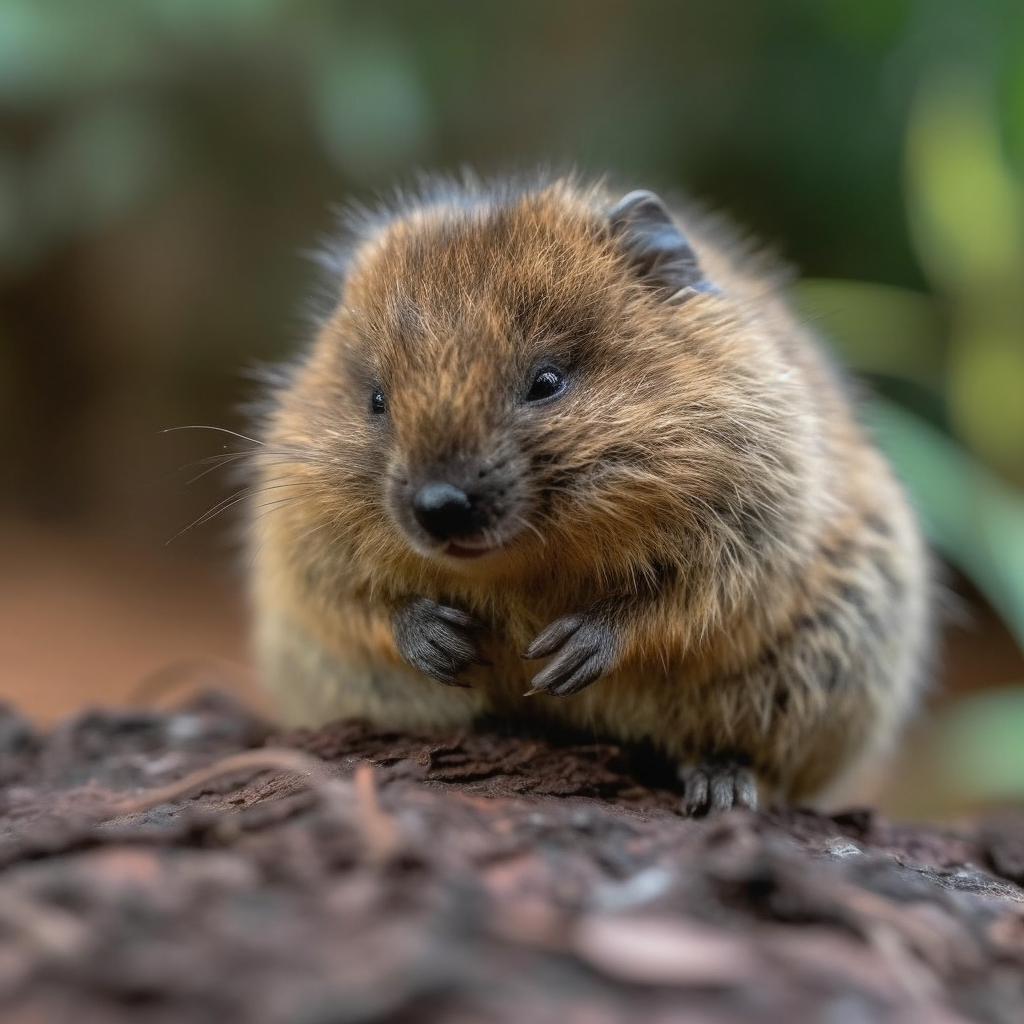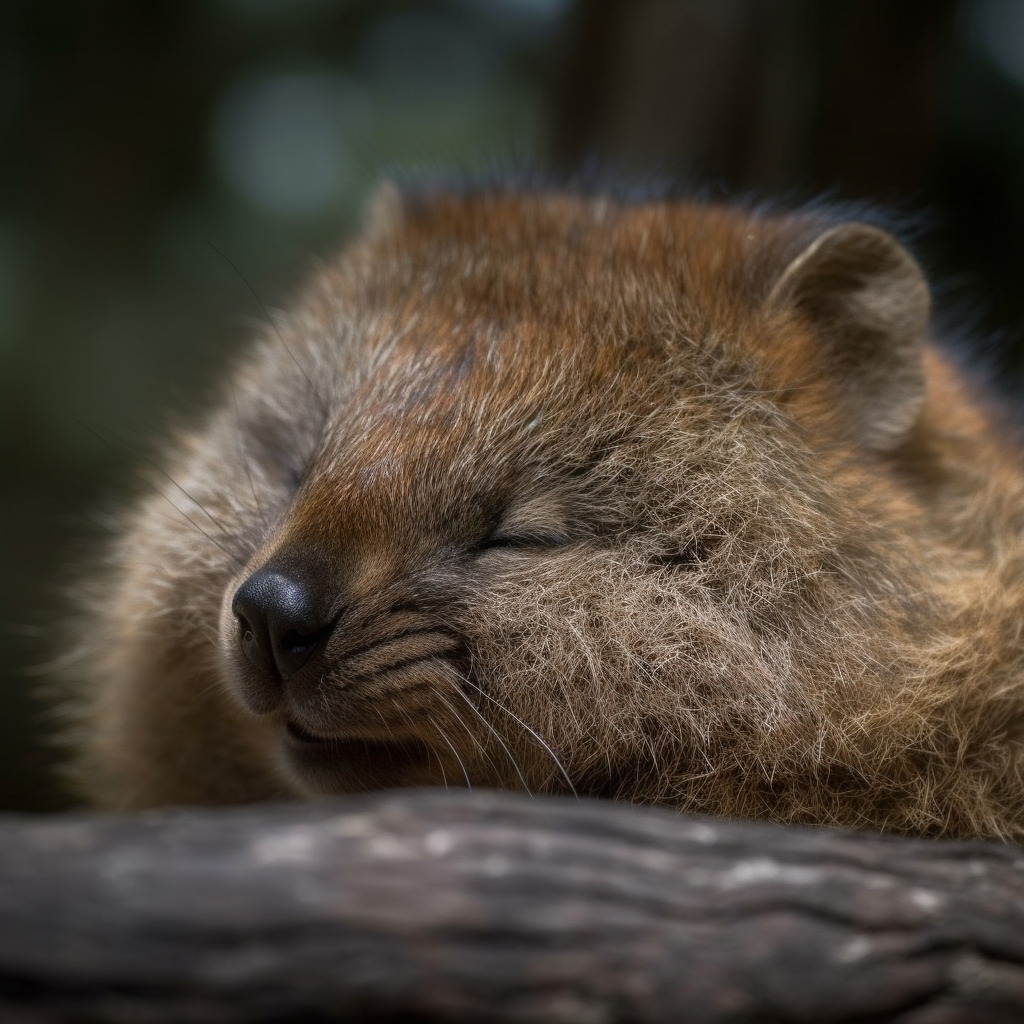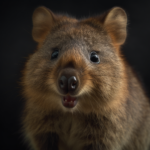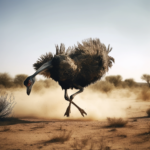Quokkas are small marsupials native to Western Australia, known for their friendly and adorable appearance. These creatures have gained popularity due to their photogenic nature and their seemingly constant smile. But have you ever wondered how these cute little animals sleep? In this article, we will explore the fascinating world of quokka sleep and delve into their sleeping habits, patterns, and unique adaptations. So, let’s dive in and discover the secrets of quokka slumber!
Key Takeaways
- Quokkas are small marsupials that are known for their adorable appearance and friendly demeanor.
- Quokkas sleep for an average of 9-11 hours per day, with most of their sleep occurring during the day.
- They have a unique sleeping behavior called “torpor,” where they enter a state of reduced activity and metabolism to conserve energy.
- Quokkas are able to sleep in various positions, including lying on their backs with their legs in the air.
- Sleep is crucial for quokkas’ overall health and well-being, allowing them to recharge and maintain their energy levels.
The Quokka: An Overview

A. Understanding the Quokka
The quokka, also known as the happiest animal on Earth, is a small marsupial native to Western Australia. These adorable creatures belong to the macropod family, which includes kangaroos and wallabies. Quokkas are known for their friendly and curious nature, often approaching humans without fear. They have become popular among tourists who visit Rottnest Island, where a large population of quokkas can be found.
Quokkas have a compact body, round face, and a short, stocky tail. They are about the size of a domestic cat, with an average weight of 2.5 to 5 kilograms (5.5 to 11 pounds). Their fur is coarse and sandy brown in color, providing excellent camouflage in their natural habitat.
B. The Quokka’s Habitat
Quokkas primarily inhabit the southwestern region of Western Australia, including Rottnest Island, Bald Island, and some parts of the mainland. They prefer dense vegetation, such as shrubs, grasses, and low-lying plants, which provide them with ample food and shelter. Quokkas are also known to inhabit forests, swamps, and coastal dunes.
These marsupials are well-adapted to their environment, with strong hind legs that allow them to hop effortlessly through the undergrowth. They are excellent climbers and can even climb trees if necessary. Quokkas are most active during the early morning and late afternoon, when the temperature is cooler.
Quokkas are herbivores, feeding on a variety of plants, including leaves, grasses, and bark. They have a unique ability to survive on minimal water, obtaining most of their moisture from the vegetation they consume. This adaptation allows them to thrive in the dry and arid conditions of their habitat.
In conclusion, the quokka is a fascinating marsupial that has captured the hearts of people around the world. Their friendly demeanor and unique habitat make them a true wonder of nature. Understanding the quokka’s behavior, habitat, and diet is essential for their conservation and protection. By appreciating these remarkable creatures, we can ensure their survival for generations to come.
The Quokka’s Sleep: A Detailed Examination
A. How Do Quokkas Sleep?
Quokkas, the adorable marsupials native to Western Australia, have some interesting sleep habits. While they may appear to be constantly cheerful and active, they do need their fair share of rest. So, how exactly do these cute creatures sleep?
Quokkas are known to be crepuscular, which means they are most active during dawn and dusk. During the day, they tend to rest and conserve energy. They typically find a cozy spot in the shade, such as under bushes or in the hollows of trees, to take their naps. Quokkas are skilled climbers, so they may even find a comfortable spot on a low branch to catch some shut-eye.
B. Quokka Sleep Schedule: An Insight
Quokkas have a unique sleep schedule that aligns with their crepuscular nature. They are primarily nocturnal, meaning they are most active at night. However, they also exhibit some diurnal behavior, being active during the day as well. This makes them crepuscular animals, with their peak activity occurring during the twilight hours.
Their sleep schedule is flexible, allowing them to adapt to their surroundings. Quokkas can adjust their sleep patterns based on factors such as food availability and the presence of predators. This adaptability helps them survive in their natural habitat, where resources can be scarce.
C. The Peculiarities of Quokka Sleep: Unveiling the Sleep Quirk
One intriguing aspect of quokka sleep is their ability to enter a state of torpor. Torpor is a temporary reduction in metabolic rate and body temperature, similar to hibernation. Quokkas can enter torpor to conserve energy during periods of food scarcity or extreme weather conditions.
During torpor, quokkas experience a significant decrease in their activity levels and may appear almost motionless. This state allows them to conserve energy and survive for extended periods without food. Once conditions improve, they can quickly awaken from torpor and resume their normal activities.
D. How Long Do Quokkas Sleep?
Quokkas typically sleep for short periods throughout the day and night, totaling around 9 to 11 hours of sleep in a 24-hour cycle. However, their sleep patterns can vary depending on factors such as age, reproductive status, and environmental conditions.
Young quokkas and females with joeys (baby quokkas) tend to sleep more than adult males. This increased sleep duration is likely due to the energy demands of growth and lactation. Adult quokkas, especially males, may sleep less and spend more time foraging for food or engaging in social interactions.
E. Where Do Quokkas Sleep?
Quokkas are resourceful when it comes to finding suitable sleeping spots. They prefer areas with ample vegetation cover, providing shade and protection from predators. Some common places where quokkas sleep include:
-
Under bushes: Quokkas often seek shelter under dense bushes, which offer both shade and concealment.
-
Hollows of trees: These marsupials can find cozy spots within tree hollows, providing them with a safe and secure place to rest.
-
Low branches: Quokkas are skilled climbers and may choose to sleep on low branches, away from ground-level threats.
-
Burrows: In some cases, quokkas may dig burrows for sleeping. These burrows offer additional protection from predators and harsh weather conditions.
It’s important to note that quokkas are highly adaptable and can adjust their sleeping locations based on their surroundings and the availability of suitable resting spots.
In conclusion, quokkas have fascinating sleep habits that align with their crepuscular nature. They rest during the day, finding comfortable spots in the shade, and are most active during dawn and dusk. Their sleep schedule is flexible, allowing them to adapt to their environment. Quokkas can enter a state of torpor to conserve energy during challenging times. They sleep for short periods throughout the day and night, with sleep duration varying based on age and reproductive status. Quokkas choose sleeping spots that offer shade, protection, and concealment, such as under bushes, in tree hollows, or on low branches. These unique sleep behaviors contribute to the survival and well-being of these adorable marsupials.
The Quokka’s Smile: An Enigma Unraveled

A. Why Do Quokkas Smile?
The quokka, a small marsupial native to Western Australia, has gained worldwide fame for its seemingly perpetual smile. But what exactly is behind this adorable expression? While it’s easy to attribute the quokka’s smile to happiness, the truth is a bit more complex.
The quokka’s smile is primarily a result of its unique facial structure. With a rounded face, large eyes, and a slightly upturned mouth, the quokka’s features naturally create the appearance of a smile. This distinctive facial expression has captured the hearts of many and earned the quokka the title of “the world’s happiest animal.”
However, it’s important to remember that the quokka’s smile doesn’t necessarily reflect its emotional state. Like any other animal, the quokka experiences a range of emotions, including happiness, fear, and stress. So, while their smile may be endearing, it’s not a definitive indicator of their mood.
B. The Perception of the Quokka as a ‘Happy’ Animal
The quokka’s smile has led to a widespread perception of the animal as a perpetually happy creature. This perception has been fueled by the countless photographs of quokkas seemingly posing for selfies with tourists on Rottnest Island, where they are abundant.
The quokka’s friendly and curious nature contributes to this perception. They are known to approach humans without fear, making them appear approachable and content. Additionally, their natural curiosity often leads them to investigate their surroundings, which can be interpreted as a sign of happiness.
However, it’s essential to remember that the quokka is a wild animal and should be treated as such. While they may appear friendly, it’s important to respect their space and not disturb their natural behavior. Interacting with quokkas should be done responsibly and with the guidance of local authorities to ensure the well-being of these unique creatures.
C. The Impact of Sleep on the Quokka’s Smile
Sleep plays a crucial role in the overall well-being of any animal, including the quokka. Understanding the sleep patterns and habits of quokkas can shed light on their behavior and potentially provide insights into their perceived happiness.
Quokkas are primarily nocturnal animals, meaning they are most active during the night. During the day, they seek shelter in dense vegetation or rock crevices to rest and conserve energy. This resting period allows them to recharge and prepare for their nighttime activities.
While the exact sleep duration of quokkas is not well-documented, it is believed that they sleep for several hours each day. Like other animals, quokkas require sufficient sleep to maintain their physical and mental health. Adequate sleep helps them regulate their body functions, process information, and recover from daily activities.
The sleep environment of quokkas is also crucial for their well-being. They prefer quiet and secluded areas where they can rest undisturbed. These areas provide them with a sense of security and allow them to enter a deep sleep state.
In conclusion, the quokka’s smile is a delightful characteristic that has captured the hearts of people around the world. While their smile may not directly reflect their emotional state, it is a result of their unique facial structure. Understanding the quokka’s sleep patterns and habits can provide valuable insights into their behavior and overall well-being. By respecting their natural habitat and allowing them to rest undisturbed, we can contribute to the conservation of these charming creatures.
The Quokka’s Survival Strategies: A Unique Approach
A. The Unsettling Truth: Why Do Quokkas Throw Their Babies?
Quokkas, known for their adorable smiles and friendly demeanor, have a unique survival strategy that may seem unsettling at first. It has been observed that in certain situations, quokkas will throw their babies. While this behavior may sound shocking, it actually serves a crucial purpose in the quokka’s survival.
When faced with a potential threat or danger, quokkas prioritize their own survival over that of their offspring. By throwing their babies, quokkas are able to distract predators and create an opportunity for their own escape. This behavior is known as “infanticide by misdirection.”
While it may be difficult to comprehend why a parent would willingly harm their own offspring, it is important to remember that survival instincts often override parental instincts in the animal kingdom. By sacrificing one offspring, the quokka increases the chances of survival for the rest of its offspring and itself.
B. The Role of Sleep in Quokka’s Survival Tactics
Sleep plays a vital role in the survival tactics of quokkas. Like many other animals, quokkas have specific sleep patterns and behaviors that contribute to their overall well-being and ability to thrive in their natural habitat.
Quokka Rest Patterns
Quokkas are primarily nocturnal animals, meaning they are most active during the night. During the day, they tend to rest and conserve their energy for their nighttime activities. This rest period allows quokkas to recover from their nightly adventures and prepare for the next round of foraging and socializing.
Quokka Sleep Cycle
Quokkas have a unique sleep cycle that consists of alternating periods of deep sleep and light sleep. This cycle allows them to remain vigilant even while resting, as they need to be constantly aware of potential threats in their environment.
Quokka Sleep Behavior
When it comes to sleep behavior, quokkas exhibit interesting adaptations. They are known to sleep in a variety of positions, including lying on their backs, curled up in a ball, or even hanging from tree branches. These different sleep positions help quokkas adapt to their surroundings and find the most comfortable and secure sleeping spot.
Quokka Sleep Duration
On average, quokkas sleep for around 9 to 11 hours per day. However, their sleep duration can vary depending on factors such as age, health, and environmental conditions. Quokkas prioritize getting enough sleep to ensure they are well-rested and ready for their nightly activities.
Quokka Sleep Environment
Quokkas prefer to sleep in secluded and sheltered areas, such as dense vegetation or burrows. These sleeping spots provide protection from predators and help quokkas feel safe and secure while they rest. Creating a cozy and secure sleep environment is essential for their survival.
Quokka Nighttime Activity
During the night, quokkas engage in various activities such as foraging for food, socializing with other quokkas, and marking their territory. Their sleep patterns are closely tied to these nighttime activities, as they need to balance rest with the demands of their active lifestyle.
In conclusion, understanding the sleep patterns and behaviors of quokkas is crucial to comprehending their unique survival strategies. By throwing their babies and prioritizing their own survival, quokkas demonstrate the lengths they are willing to go to ensure their species‘ continuation. Sleep plays a vital role in enabling quokkas to thrive in their natural habitat, allowing them to remain alert, well-rested, and ready to face the challenges of their environment.
The Sleepy Quokka: A Closer Look

A. Sleep Patterns of the Quokka
The quokka, a small marsupial native to Western Australia, has some interesting sleep patterns. While they are not strictly nocturnal, quokkas are most active during the night, which means they sleep during the day. This makes them what is known as crepuscular animals, meaning they are most active during twilight hours.
Quokkas typically sleep for around 10 hours a day, but this can vary depending on factors such as age, health, and environmental conditions. They have a unique sleep cycle, which consists of short periods of sleep followed by brief periods of wakefulness. This pattern allows them to remain alert and responsive to their surroundings, even while resting.
B. The Importance of Sleep for a Quokka’s Health
Sleep is crucial for the overall health and well-being of quokkas, just as it is for humans. During sleep, quokkas undergo important physiological processes that help restore and rejuvenate their bodies. These processes include tissue repair, hormone regulation, and memory consolidation.
Adequate sleep is essential for a quokka‘s immune system, as it helps strengthen their ability to fight off infections and diseases. Lack of sleep can weaken their immune system, making them more susceptible to illness.
Additionally, sleep plays a vital role in a quokka‘s cognitive function. It helps improve their learning and memory abilities, allowing them to navigate their environment more effectively and find food and water sources.
C. The Connection Between Sleep and the Quokka’s Behavior
The sleep patterns of quokkas have a direct impact on their behavior. When quokkas are well-rested, they exhibit more active and energetic behavior during their waking hours. They are more likely to engage in social interactions, forage for food, and explore their surroundings.
On the other hand, when quokkas are sleep-deprived or experiencing disrupted sleep patterns, they may become lethargic and less active. This can affect their ability to find food and water, as well as their overall survival in their natural habitat.
Interestingly, quokkas have the ability to adjust their sleep patterns based on their environment and external factors. For example, during periods of extreme heat or scarcity of food, they may enter a state of torpor, which is a temporary reduction in metabolic activity. This allows them to conserve energy and survive in challenging conditions.
In conclusion, understanding the sleep patterns and habits of quokkas is essential for their overall well-being and survival. Sleep plays a vital role in their health, behavior, and ability to adapt to their environment. By studying and researching quokka sleep, scientists can gain valuable insights into the sleep patterns of other animals and even humans.
Sleep Tools for Quokkas: A Hypothetical Exploration
A. The Concept of Sleep Mask for Quokkas
Quokkas, known for their adorable smiles and friendly demeanor, are small marsupials native to Western Australia. These nocturnal creatures have unique sleep patterns and behaviors that have fascinated scientists and researchers for years. As we delve into the world of quokka sleep, let’s explore a hypothetical tool that could potentially enhance their sleep experience: the sleep mask.
The Importance of Sleep for Quokkas
Before we dive into the concept of a sleep mask for quokkas, let’s understand why sleep is crucial for these fascinating creatures. Like humans and many other animals, quokkas need sleep to function properly. Sleep plays a vital role in various physiological processes, including memory consolidation, hormone regulation, and overall well-being.
What is a Sleep Mask?
A sleep mask, also known as an eye mask or a blindfold, is a tool commonly used by humans to block out light and create a dark environment for better sleep. It is typically made of soft, comfortable material and covers the eyes, providing a sense of darkness that promotes relaxation and deeper sleep.
Potential Benefits of Sleep Masks for Quokkas
Considering the nocturnal nature of quokkas, a sleep mask designed specifically for them could potentially offer several benefits. Here are a few hypothetical advantages:
-
Light Reduction: Quokkas are primarily active during the night, and their sleep patterns may be disrupted by natural or artificial light sources. A sleep mask could help reduce the amount of light reaching their eyes, creating a darker environment conducive to sleep.
-
Enhanced Sleep Quality: By blocking out light, a sleep mask may help quokkas achieve a more restful and uninterrupted sleep. This could potentially lead to improved sleep quality and overall well-being.
-
Protection from Environmental Factors: Quokkas inhabit various environments, including forests and coastal areas. A sleep mask could potentially shield their eyes from dust, wind, or other environmental factors that might disturb their sleep.
-
Stress Reduction: Quokkas, like many animals, may experience stress due to factors such as predators or changes in their habitat. A sleep mask could potentially create a sense of security and help reduce stress levels, promoting better sleep.
B. Sleep Stock: A Potential Resource for Quokka’s Sleep
In our hypothetical exploration of sleep tools for quokkas, another interesting concept to consider is the idea of sleep stock. Sleep stock refers to the availability and accessibility of suitable sleeping spots for quokkas in their natural habitat.
Quokka Sleep Environment
Quokkas are known to seek sheltered areas such as hollow logs, dense vegetation, or rock crevices for their daytime rest. These cozy spots provide protection from predators and offer a sense of security. However, the availability of such sleep environments may vary depending on the habitat and population density.
Importance of Sleep Stock
Sleep stock plays a crucial role in the sleep patterns and overall well-being of quokkas. Sufficient sleep stock ensures that quokkas have access to suitable sleeping spots, allowing them to rest undisturbed and recover from their nocturnal activities.
Factors Affecting Sleep Stock
Several factors can impact the availability and quality of sleep stock for quokkas. These include:
-
Habitat Loss: Human activities, such as urbanization and deforestation, can lead to the destruction of quokka habitats. This can reduce the availability of suitable sleep environments for these marsupials.
-
Competition for Resources: Quokkas may compete with other animals for limited sleep stock resources. Increased competition can result in reduced access to preferred sleeping spots, potentially affecting their sleep patterns.
-
Predator Presence: The presence of predators in quokka habitats can influence their choice of sleep environments. Quokkas may seek out safer sleeping spots to minimize the risk of predation, which could impact their sleep stock options.
-
Population Density: Quokka populations can vary in density, with higher densities potentially leading to increased competition for sleep stock. Higher population densities may result in a scarcity of suitable sleeping spots, affecting the sleep patterns of quokkas.
Understanding the concept of sleep stock and its influence on quokka sleep patterns can help researchers and conservationists develop strategies to preserve and enhance the availability of suitable sleep environments for these unique marsupials.
In conclusion, the hypothetical exploration of sleep tools for quokkas, such as sleep masks and sleep stock, offers intriguing possibilities for improving their sleep experience. By considering the specific needs and behaviors of quokkas, we can continue to deepen our understanding of their sleep patterns and contribute to their overall well-being. Conclusion
In conclusion, quokkas are fascinating creatures with unique sleeping habits. Despite their small size, they manage to get the rest they need by taking short naps throughout the day and night. These adorable marsupials are able to adapt their sleep patterns to their environment, allowing them to conserve energy and stay alert to potential dangers. Quokkas are truly remarkable animals, and studying their sleep behavior helps us better understand the intricacies of the animal kingdom. So, the next time you come across a picture of a quokka taking a nap, remember that these adorable creatures have their own special way of getting their beauty sleep.
Frequently Asked Questions
Q1: Why do quokkas smile?
A1: Quokkas appear to be smiling due to the structure of their facial muscles. This “smile” is not related to their emotional state but rather is a natural characteristic of their species.
Q2: Where do quokkas sleep?
A2: Quokkas are primarily nocturnal and sleep during the day. They usually find a comfortable spot in the shade of trees or in tall grasses to rest and sleep.
Q3: How do quokkas sleep?
A3: Quokkas sleep in a similar way to other marsupials. They typically find a quiet, shaded area to rest and sleep during the day, as they are mostly nocturnal animals.
Q4: How long do quokkas sleep?
A4: Quokkas typically sleep for about 10 hours a day, mostly during daylight hours, as they are nocturnal creatures.
Q5: What is the sleep cycle of a quokka?
A5: Quokkas are nocturnal, which means their sleep cycle is opposite to humans. They are most active during the night and sleep during the day.
Q6: What are the sleep habits of quokkas?
A6: Quokkas are nocturnal and spend most of the day sleeping. They prefer to rest in shaded areas, often in the underbrush or under trees.
Q7: What is a quokka’s sleep environment like?
A7: Quokkas typically sleep in the shade of trees or in tall grasses to avoid the heat of the day. They prefer quiet, secluded areas where they can rest undisturbed.
Q8: What is a quokka’s sleep schedule?
A8: Quokkas are nocturnal, meaning they are active during the night and sleep during the day. They typically sleep for about 10 hours a day.
Q9: What are some interesting facts about quokka sleep patterns?
A9: Quokkas are nocturnal and spend most of the day sleeping. They typically sleep for about 10 hours a day, and prefer to rest in shaded areas, often in the underbrush or under trees.
Q10: What is a sleep mask and how can it improve sleep?
A10: A sleep mask is a comfortable, light-blocking mask designed to cover your eyes and help improve sleep quality. It can be particularly beneficial for individuals who are sensitive to light, work night shifts, or travel frequently.




